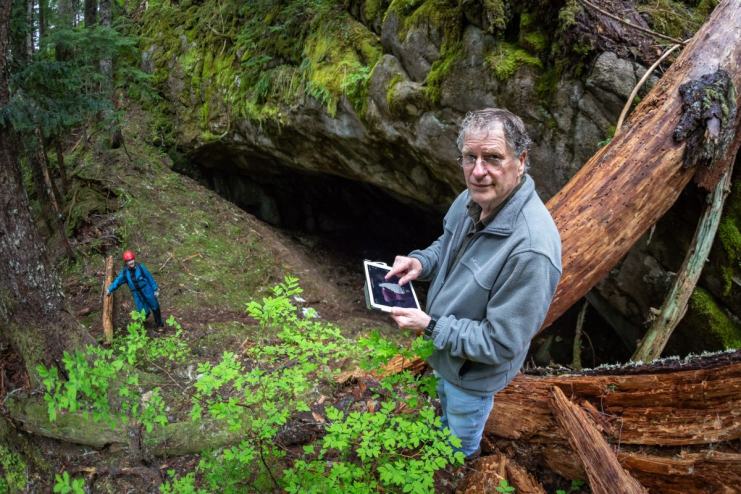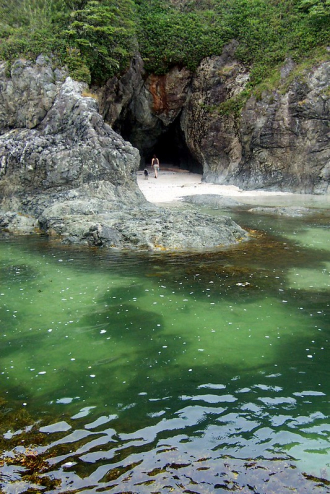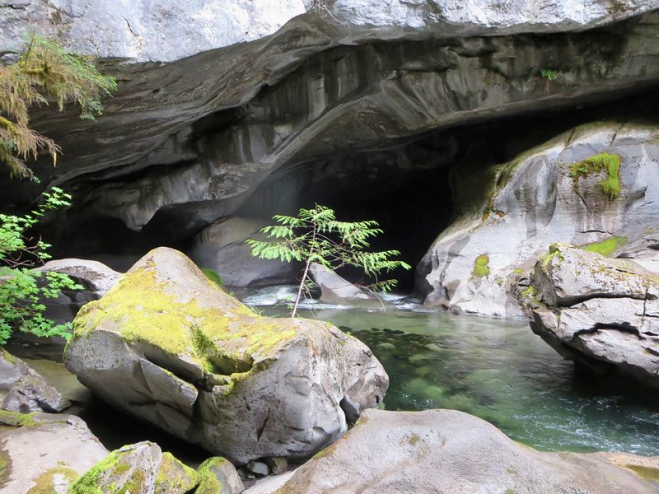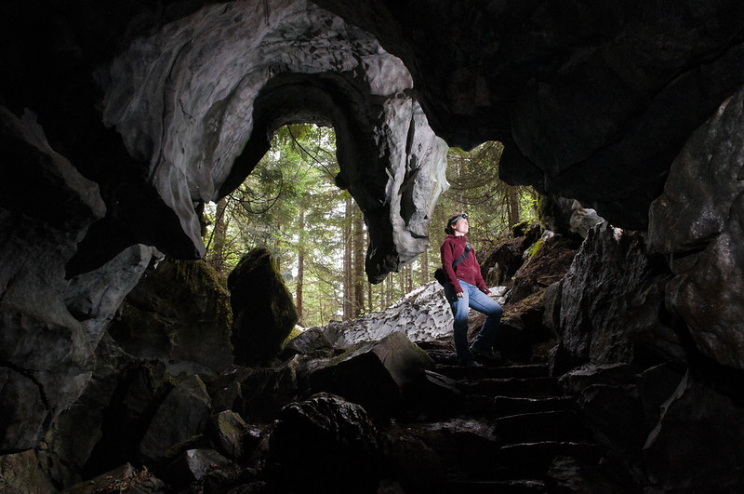If you live on VanIsle, you’ve probably heard of the Horne Lake Caves.
They’re an extravagant cave system on the west of the Island past Qualicum. Mother Nature really outdid herself on this one. And they’re one of the most extensive tourist operations we have.
They’ve been well protected and are now a provincial park, but not for the aesthetic reasons you think.
Beyond the money-making venture they’ve become, they have a far greater impact on our above-ground world than you’d expect.
The mastermind behind the operation they’ve now become knew this. He knew people would love to see, and he too, full advantage of that to keep their underlying purpose protected.
His name is Paul Griffiths, and he’s an expert on an landscape called karst.

Photo by Grant Callegari | Hakai Magazine
Karst is connected to everything. It’s a whole topography that’s made up of soluble kinds of rock. That means the rock dissolves more easily in water, unlike granite or basalt.
VanIsle’s karst landscape is mostly made up of limestone, but some karst landscapes have rock like dolomite and even marble.
Because limestone dissolves easily in water, and because we get a lot of rain, VanIsle’s karst landscape slowly morphs its shape. The water creates endless nooks, crannies, and underground streams. It can even create cave systems as it sculpts and deposits thousand of different minerals and microorganisms along its route.
It’s also the base of a lot of VanIsle’s forests.

Photo by Gerry Thomason | Flickr
While this underground system is truly a world all its own, it’s intricately connected with our world earthside.
“The trees grow the way they do because of the karst, but they also influence the development of the karst—it’s a feedback loop,” said Griffiths to Bruce Grierson for Hakai Magazine. Underground, the tree roots make a home for a dense web of fungi that is crawling with microbial life.
“So when you’re talking biodiversity, you’ve got it going in both directions.”
Our karst landscape doesn’t have much soil on top of it. The forest keeps that soil in place, and decaying trees help rebuild soil that gets washed into the underground caves.
Take away the trees, and what little soil you had goes AWOL. That leaves behind a rocky wasteland.
And as Griffiths states, what goes on up top also affects the underground.
With no roots to hold it in place, the soil instead mixes with rainwater and other contaminants and runs into the karst’s underground streams and aquifers.
The water loses oxygen, which starves the web of life that lives underground. It can also poison the clean water we depend on in towns and cities, and harm important fish-rearing streams.
Cutting down the forest is a pretty good way to kill everything both on top of and below the ground.

Photo by David Stanley | Flickr
This connection has pushed Griffiths to spend his life studying and protecting this precious landscape.
Intact temperate rainforest over karst is already extremely rare. An entire quarter of what remains in the world is in coastal British Columbia.
Logging has already altered much of the karst ecosystem on British Columbia’s coast, particularly on VanIsle.
Humans have a history of logging karst forests thinking they’ll grow back, and then finding out they don’t. Ever.
In the Middle East, the mythic Cedars of Lebanon—believed by some Christians to be the place where the resurrected Jesus revealed himself—grew on pure limestone karst very much like that of VanIsle.
The forests were destroyed to build the temples of ancient Egypt and Jerusalem. The soil disappeared, and millennia later has never come back.
On the Island, the Kinman is an area 150 kilometres north of Campbell River. It’s just one example of the destruction logging can cause to karst.
Until the early 1990s, the area was old growth forest. Thirty-odd years after being logged, it’s still a completely bare mountainside. It’s just stumps and the odd purple flash of fireweed.
“This is the next battleground,” said Griffiths to Haikai Magazine. “Or it would be if people cared about karst.”
If we’d like to see more of our natural ecosystems and less of these “battlegrounds,” we might have to start caring more.

Photo by Province of British Columbia | Flickr
If you’d like to experience the magic realm of karst underground, the Horne Lake Caves are a great place to start. But they’re far from the only ones.
There are actually countless connected karst caves on VanIsle. Many are still covered by the original rainforests that keep these delicate ecosystems intact.
We may not always see these underground worlds, but if we don’t take steps to keep them intact, we will feel the impacts of losing them.









